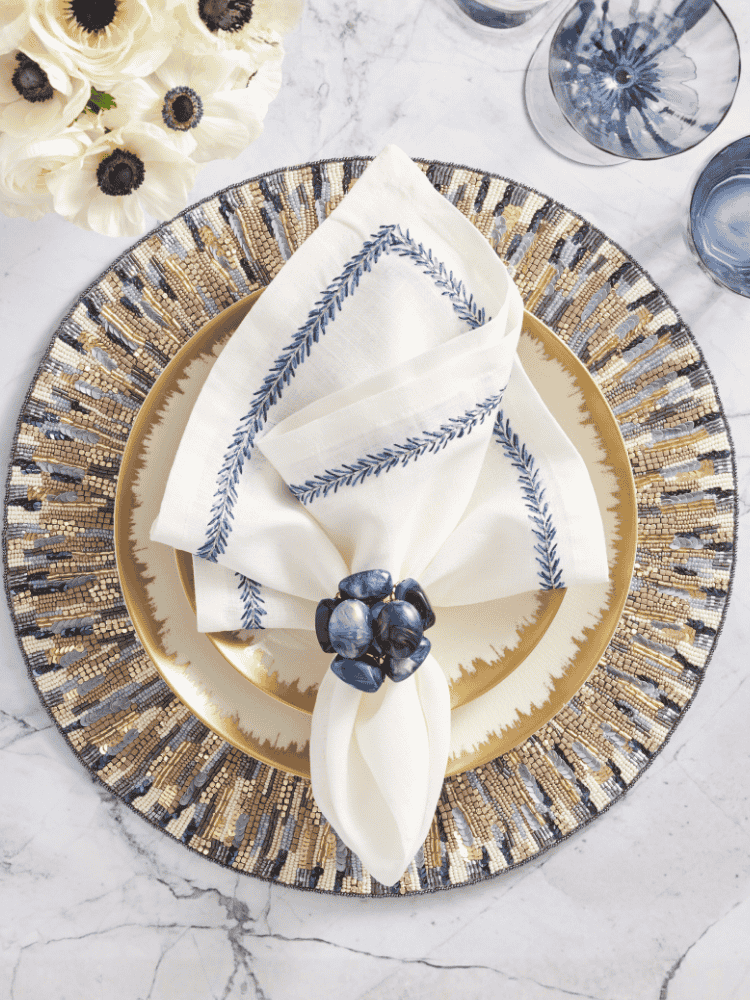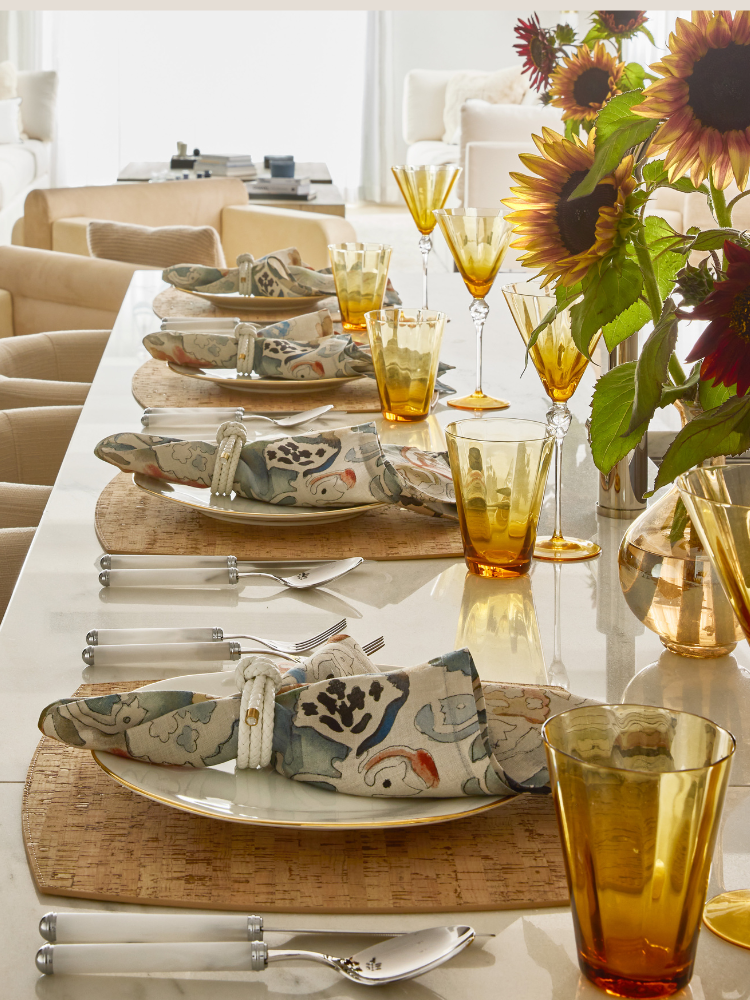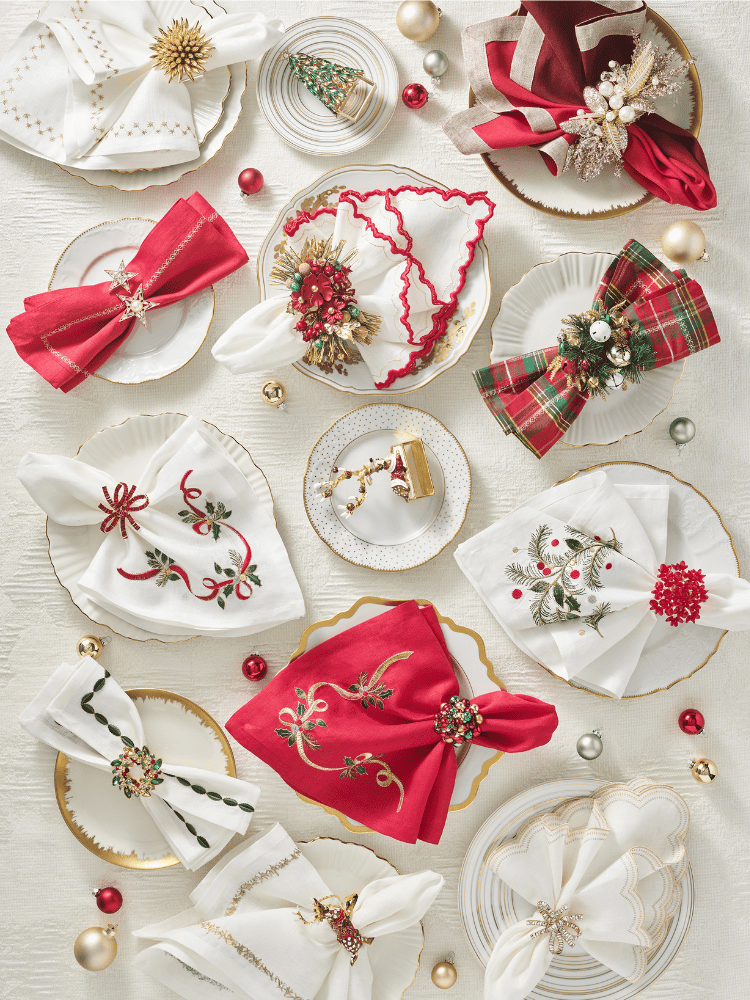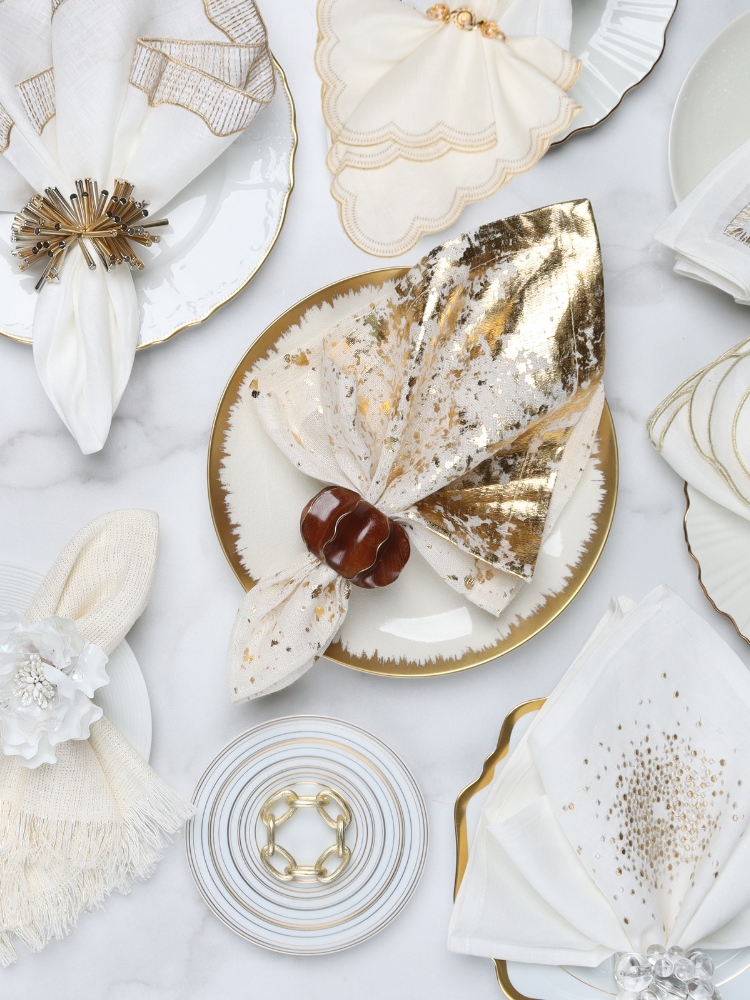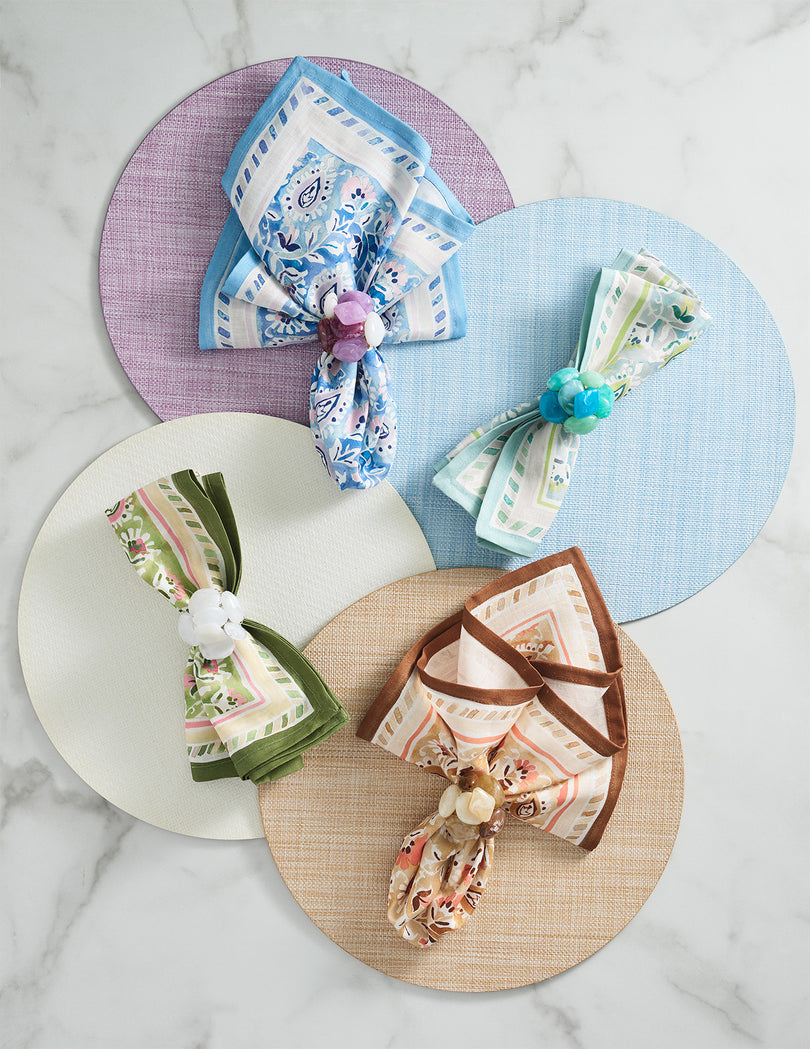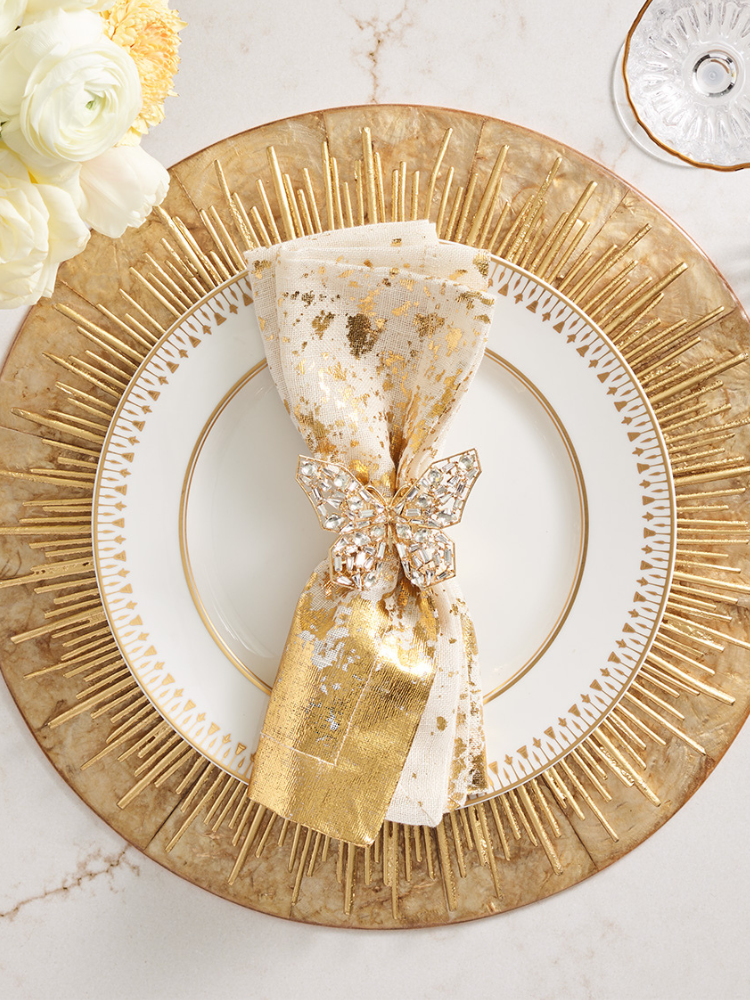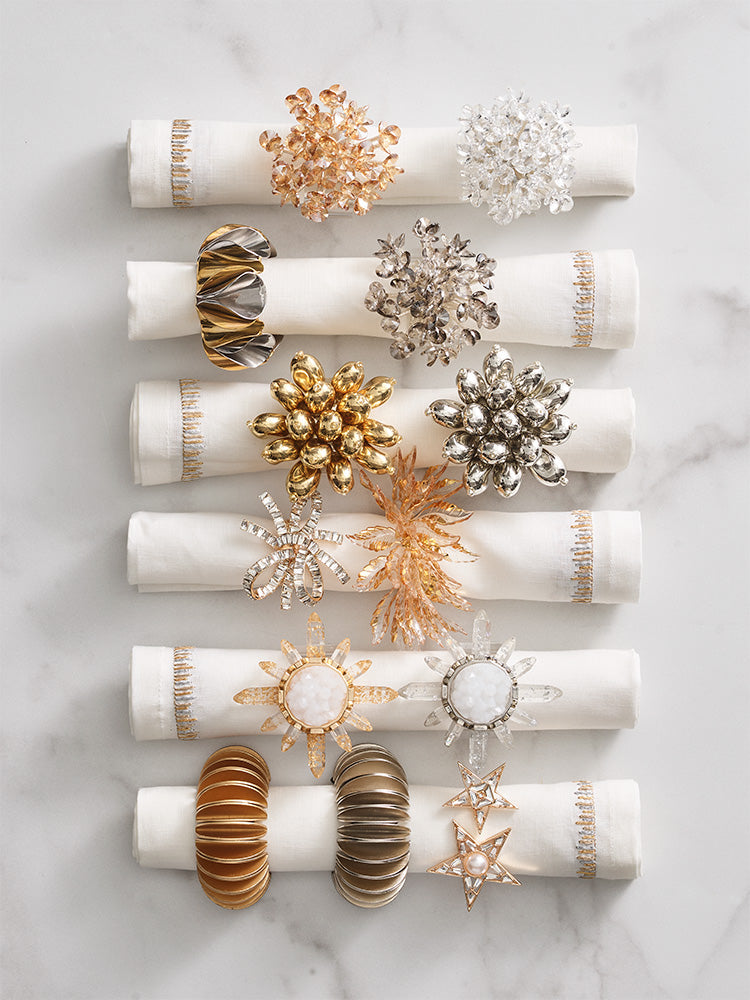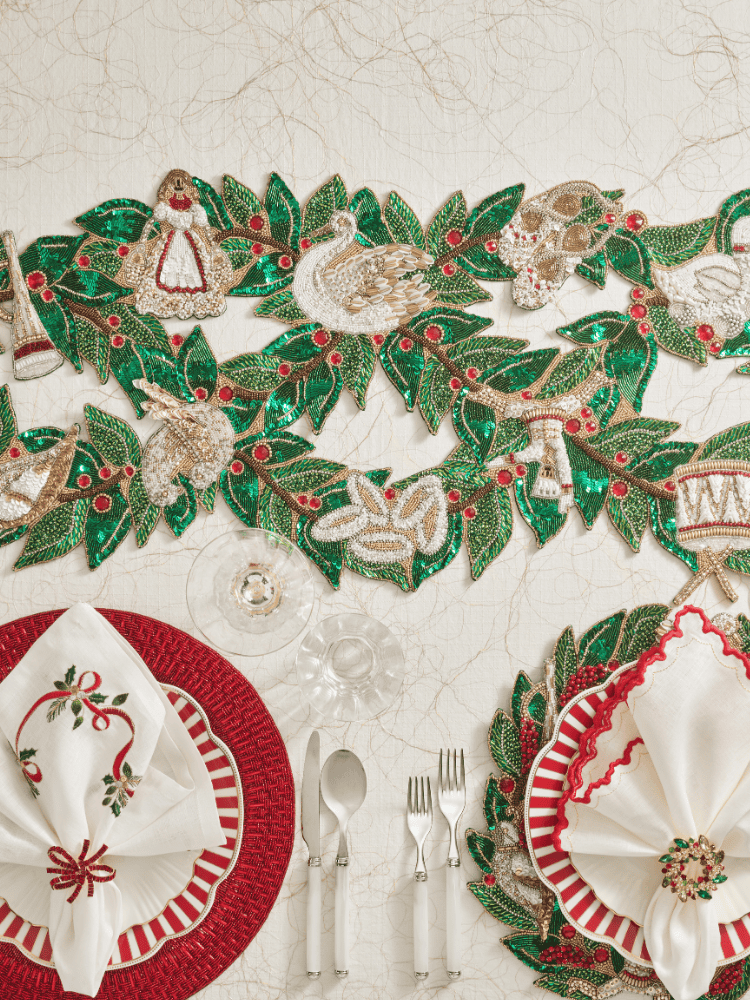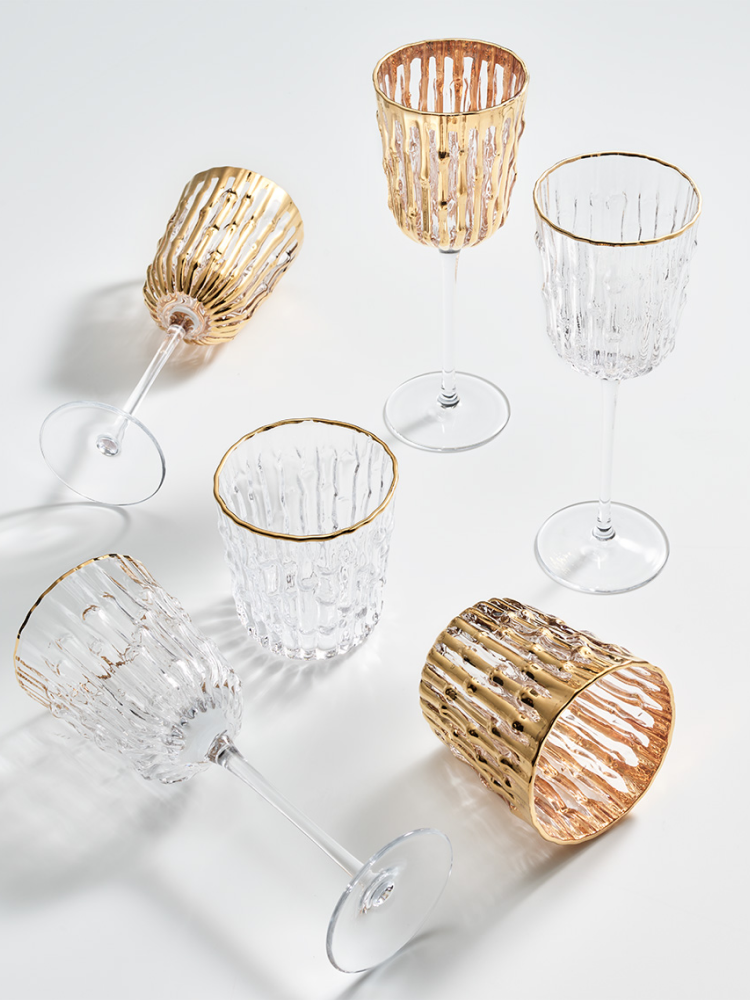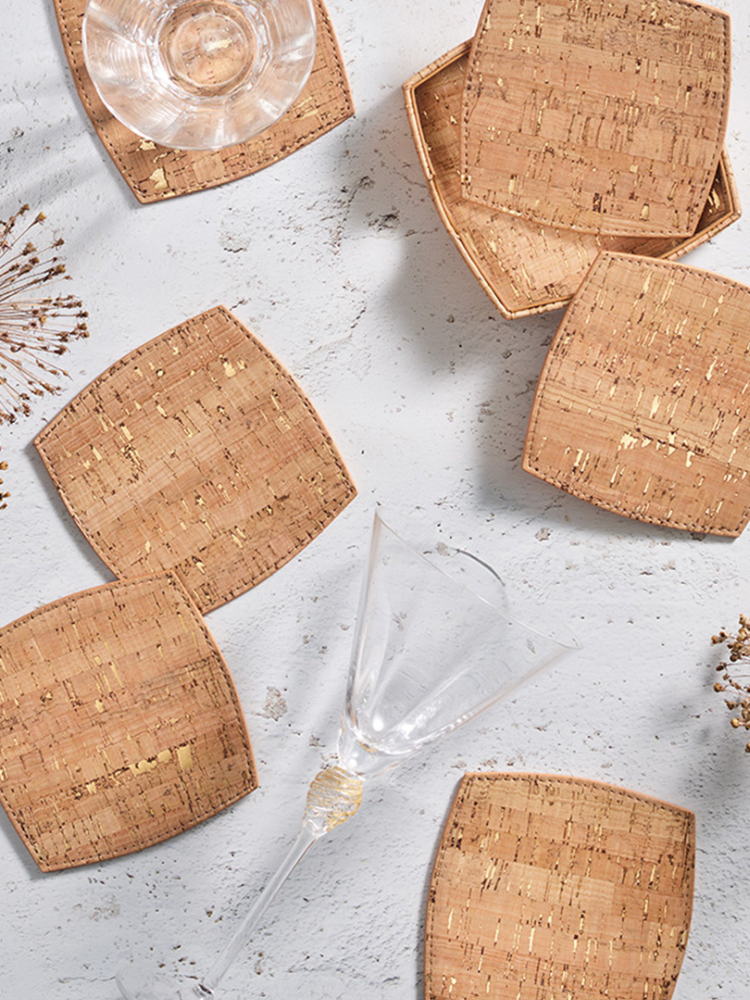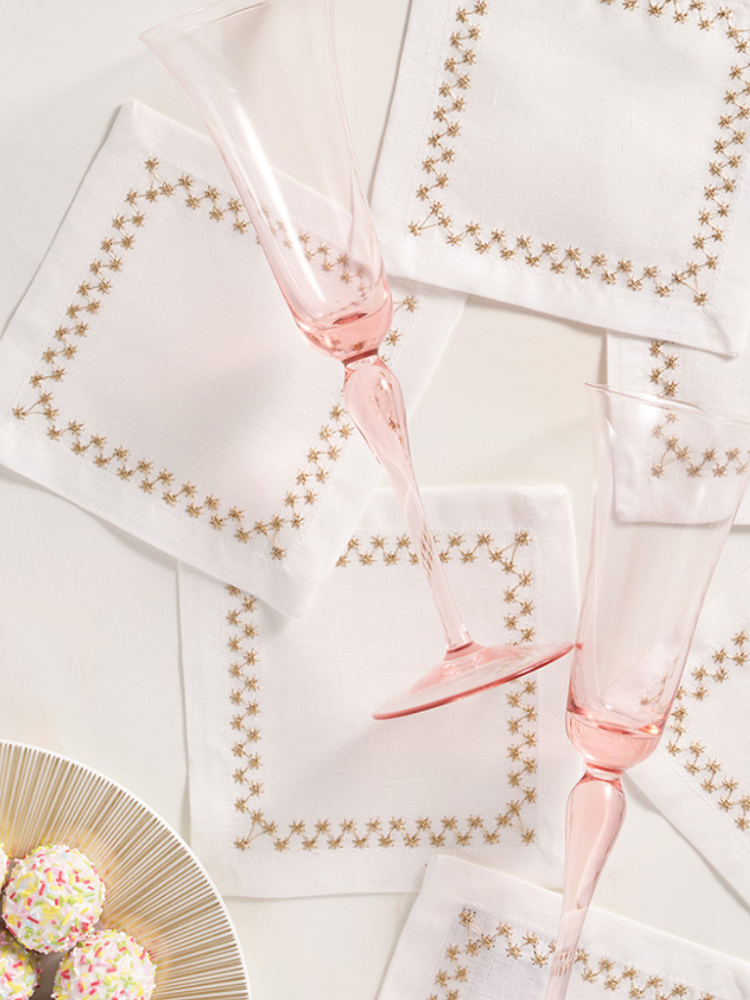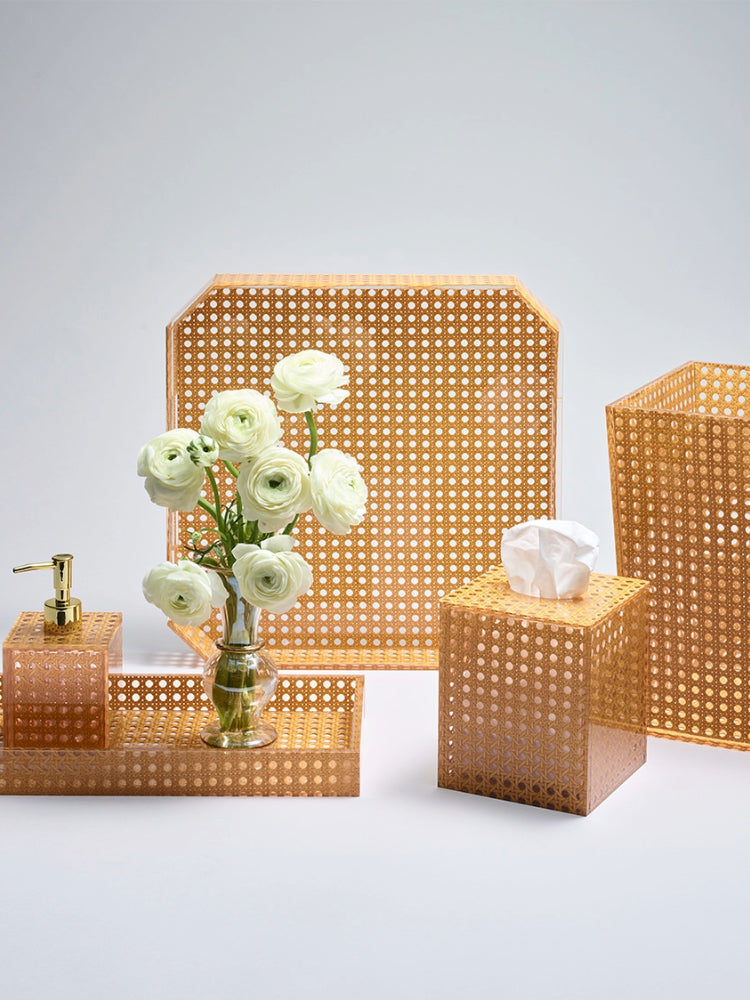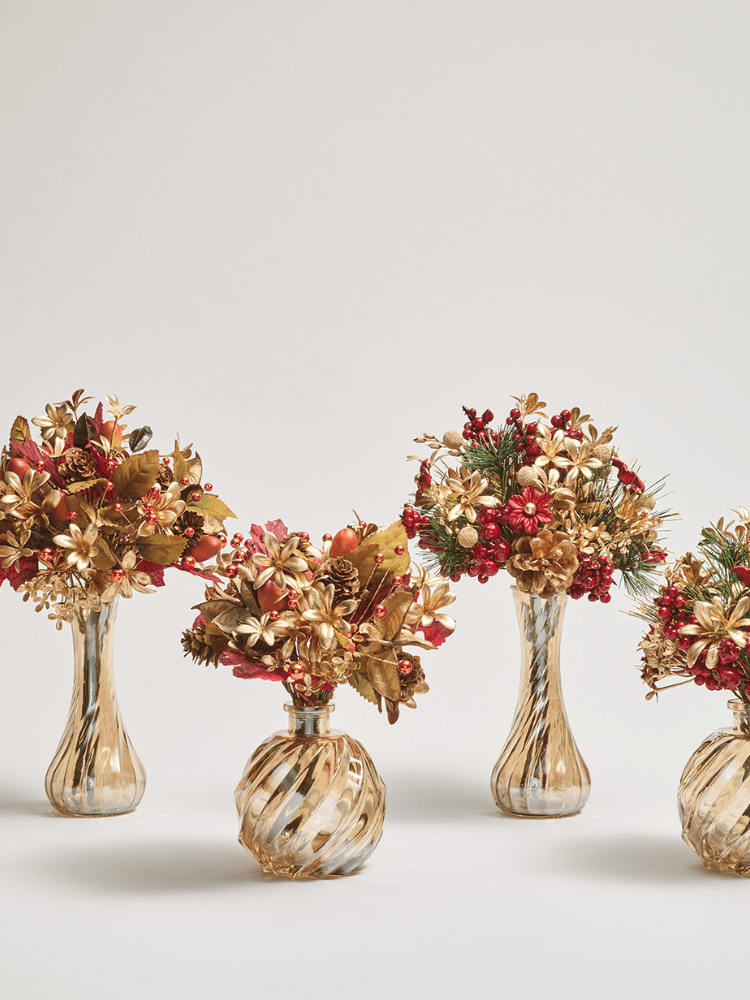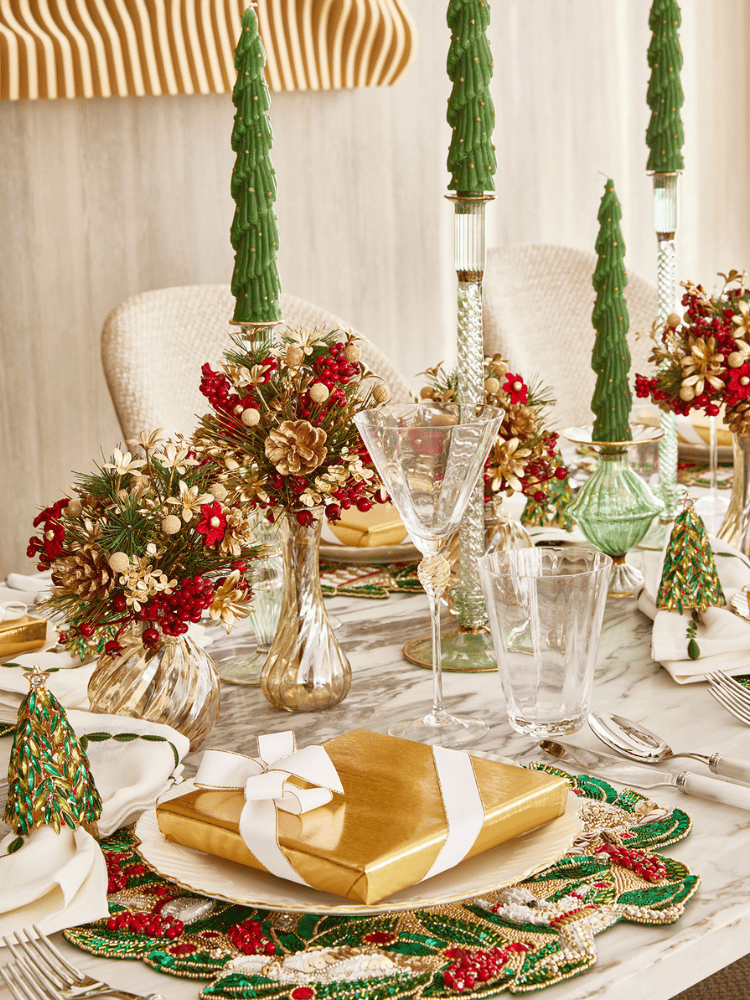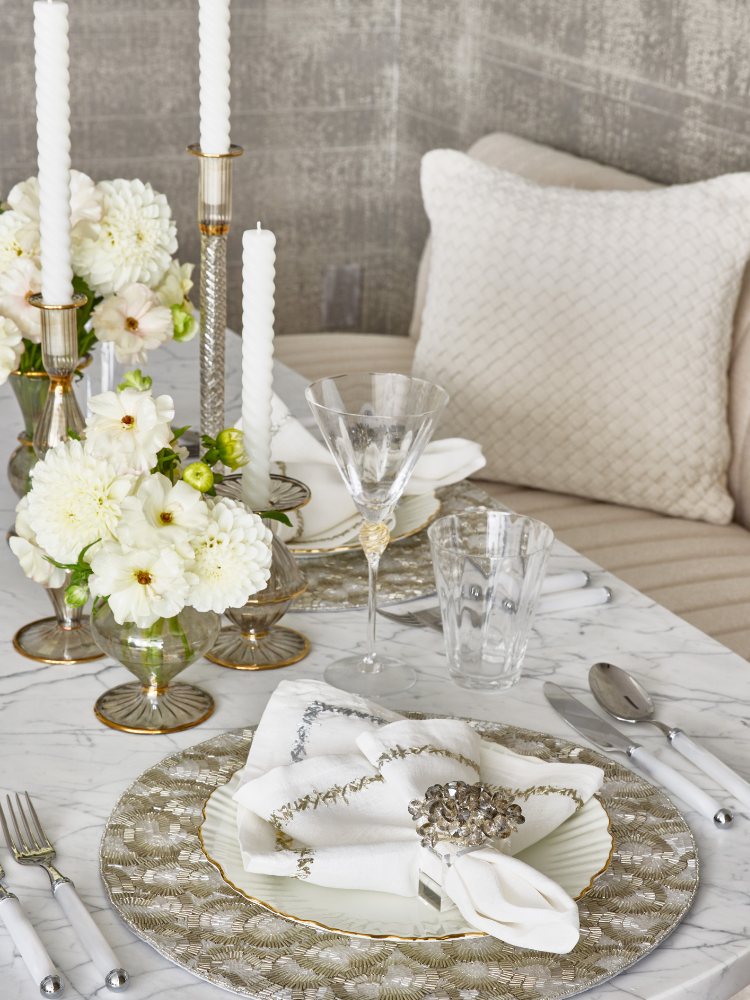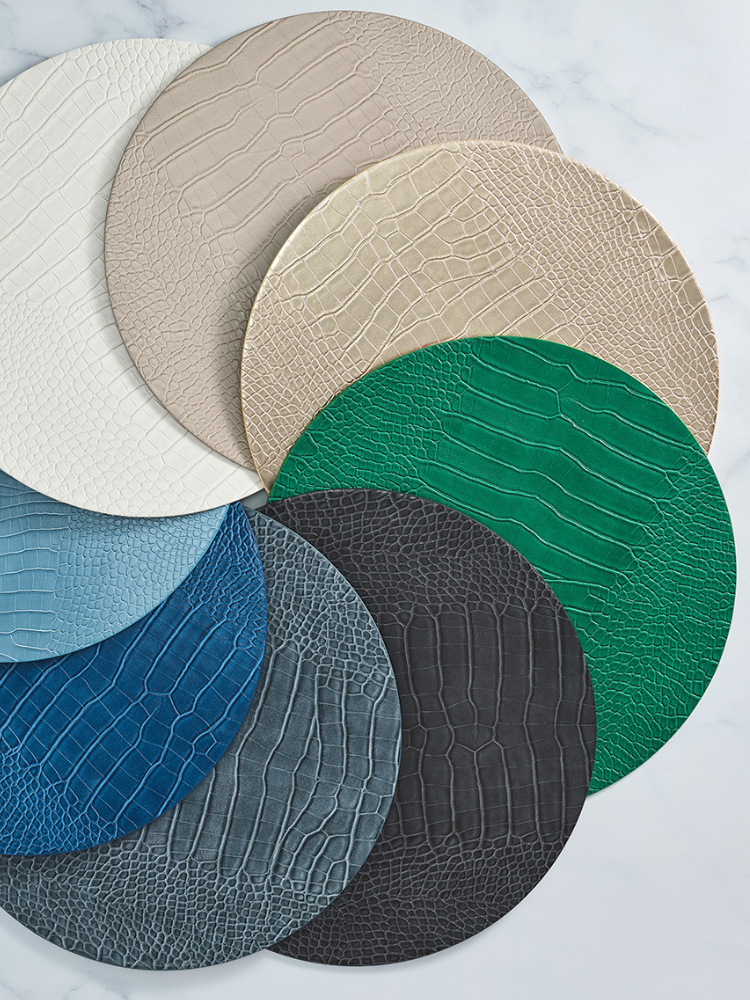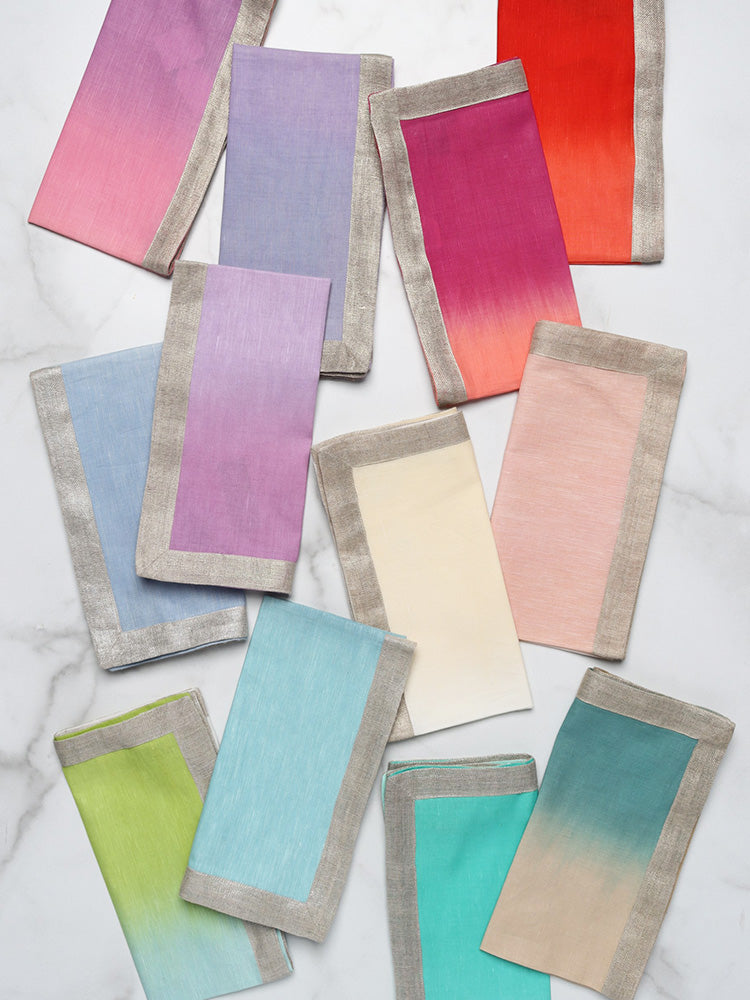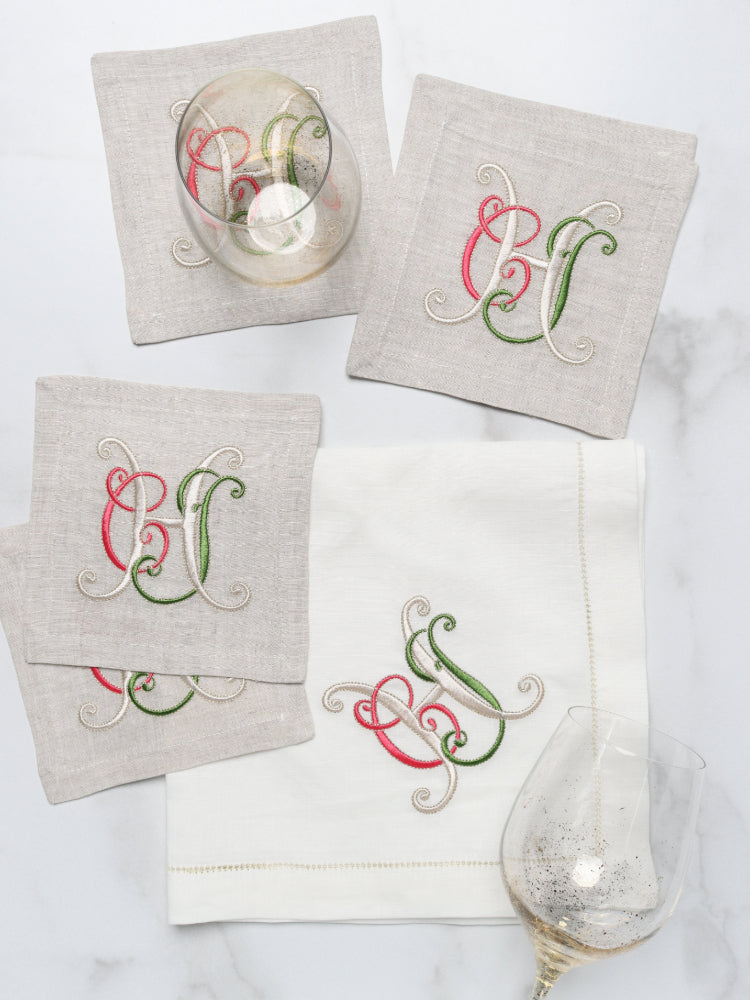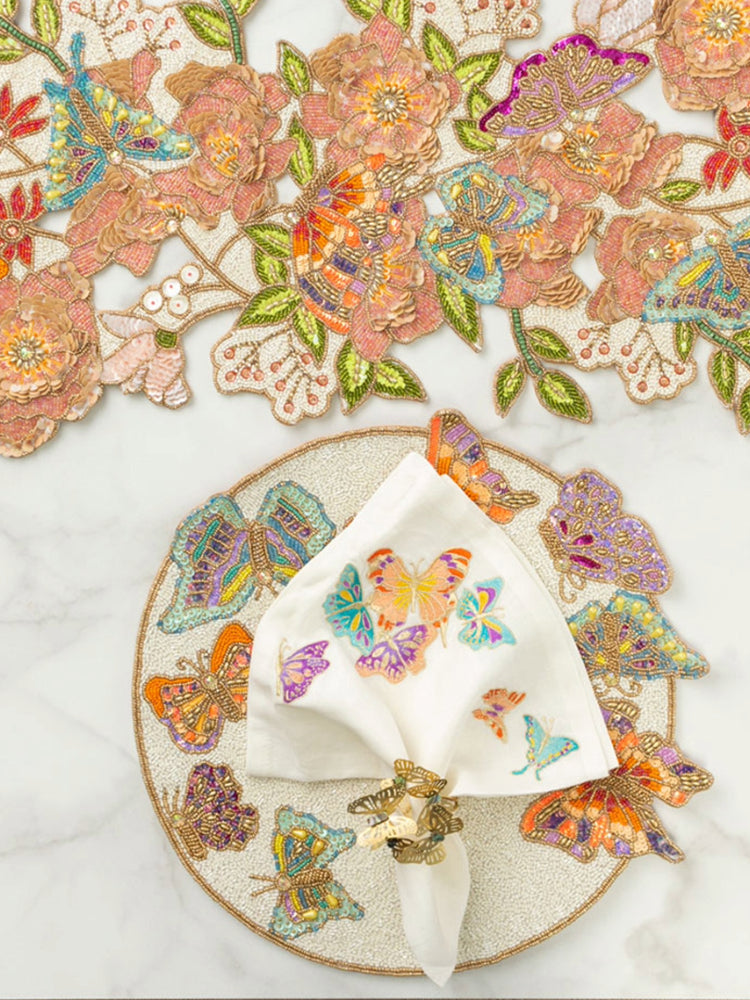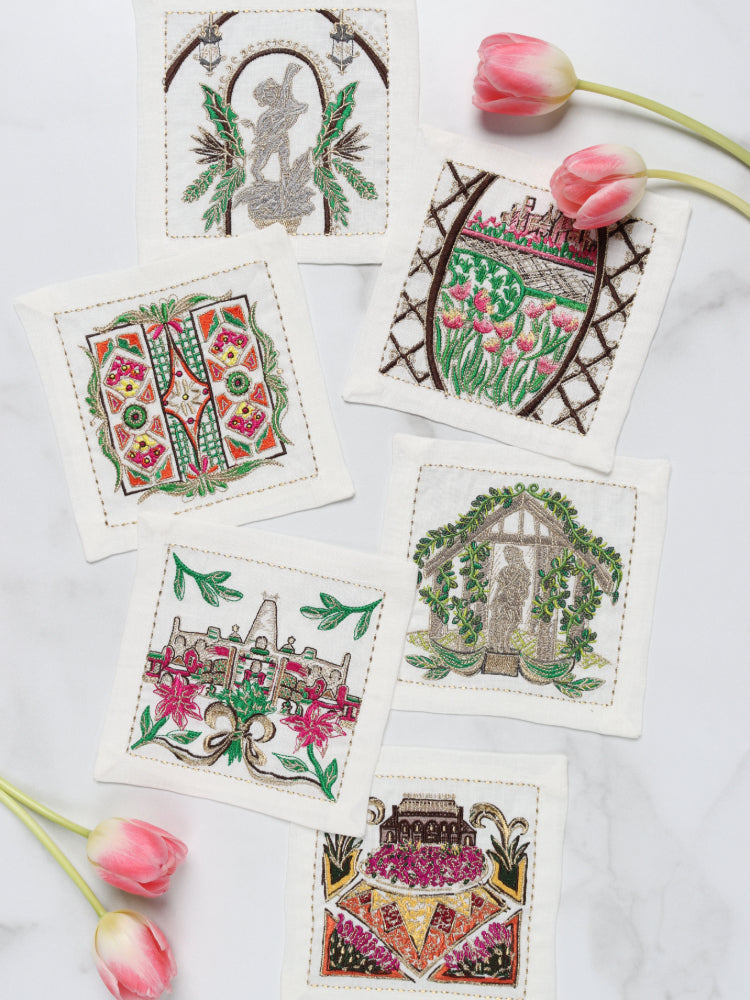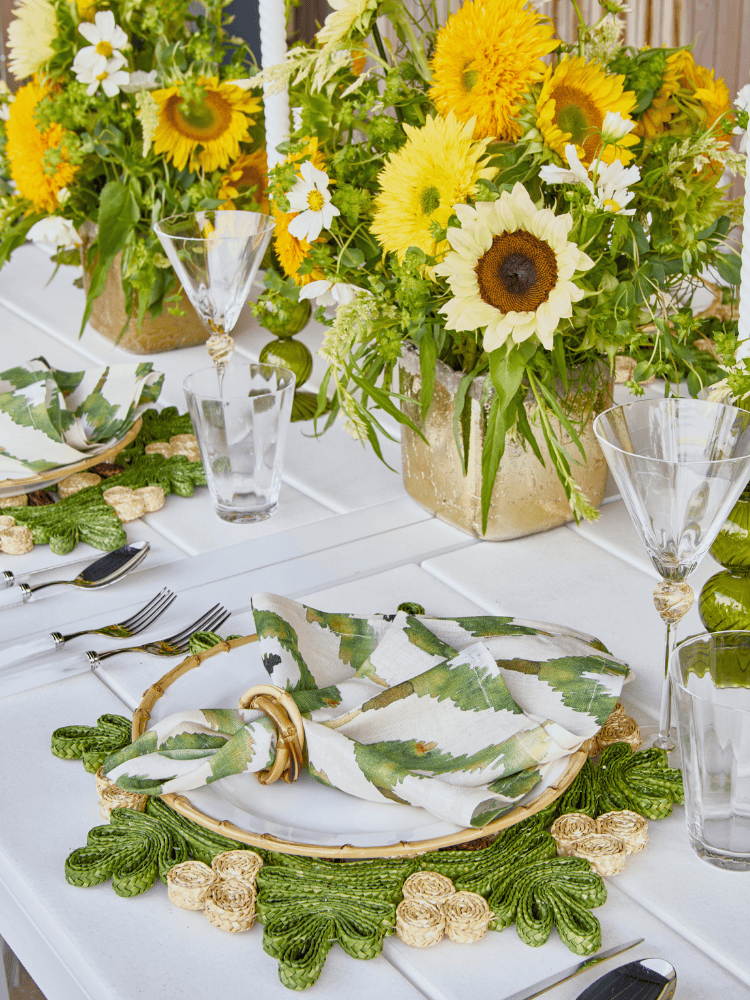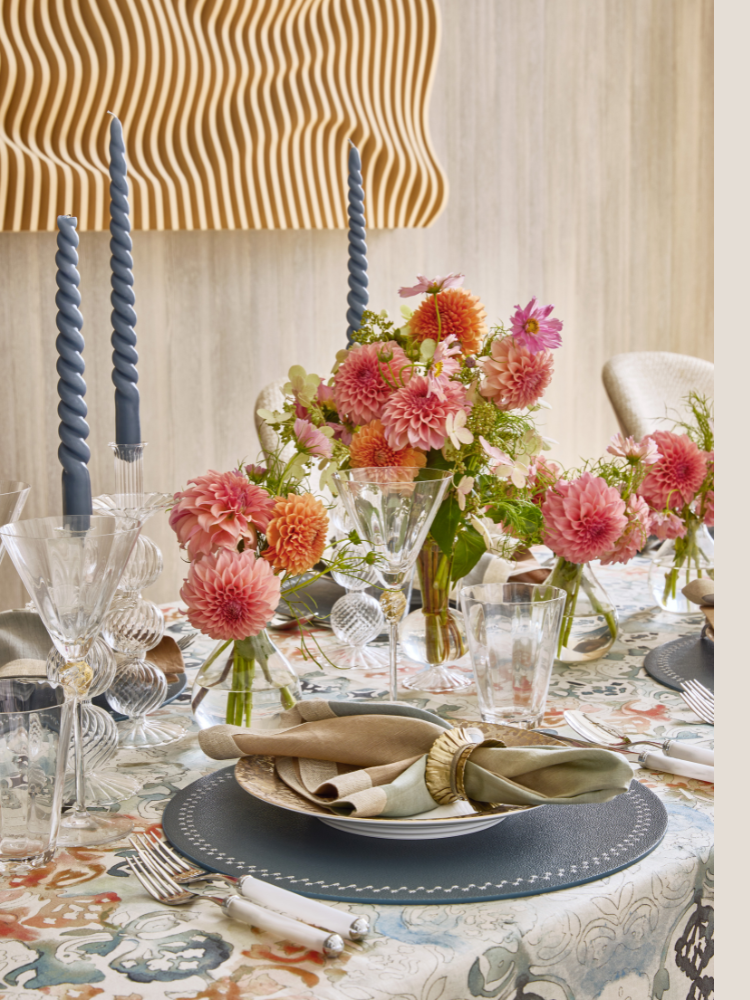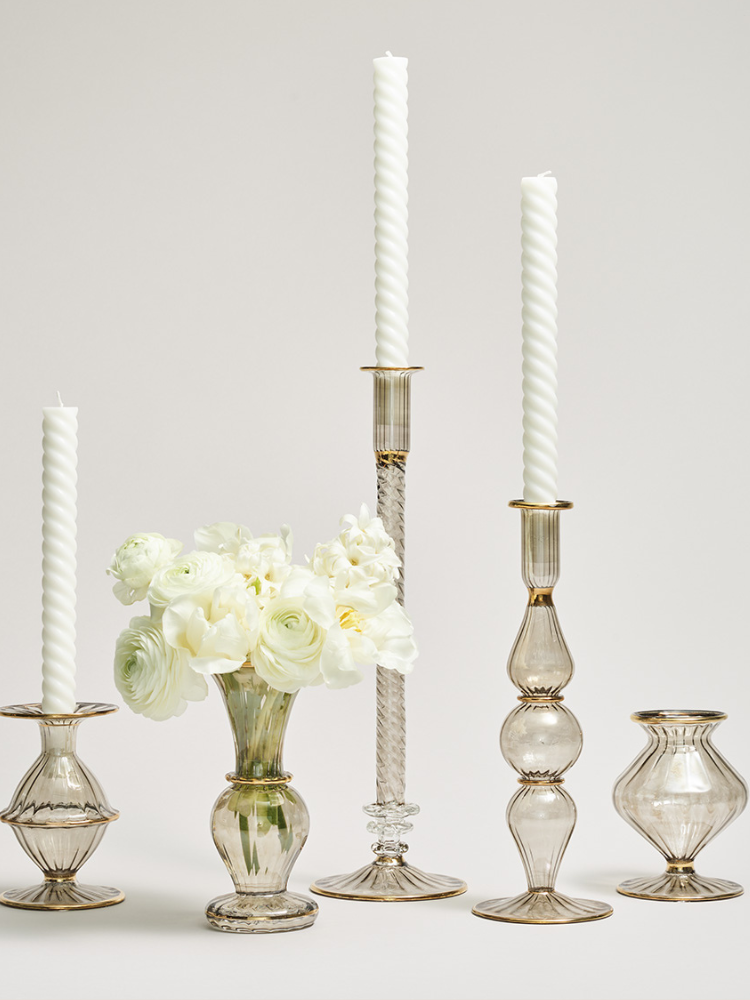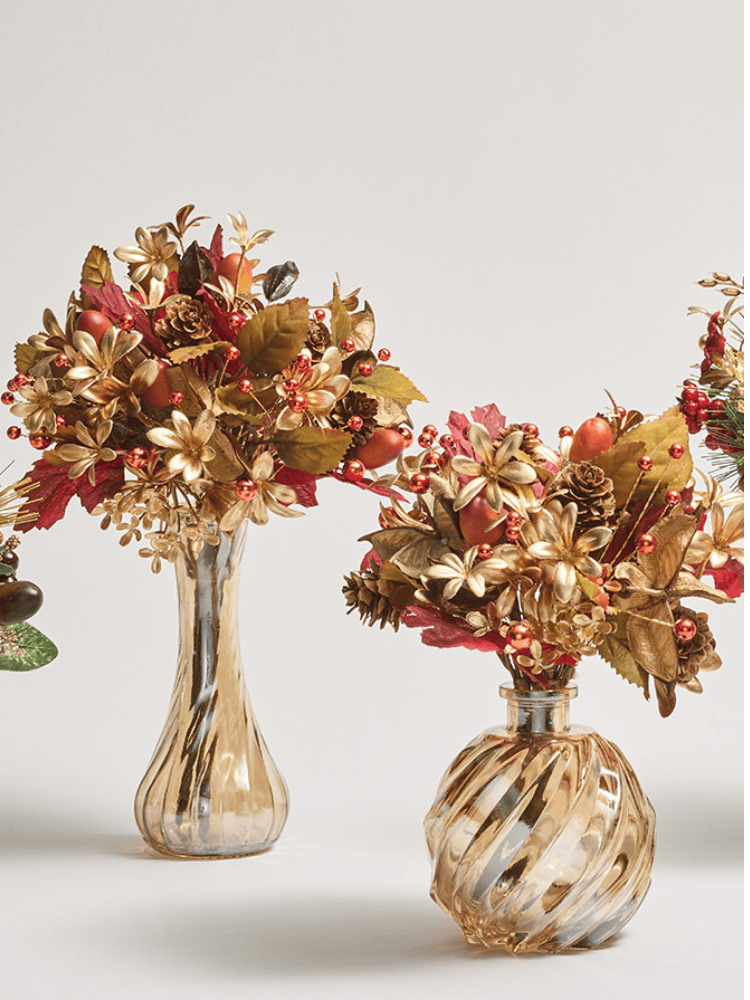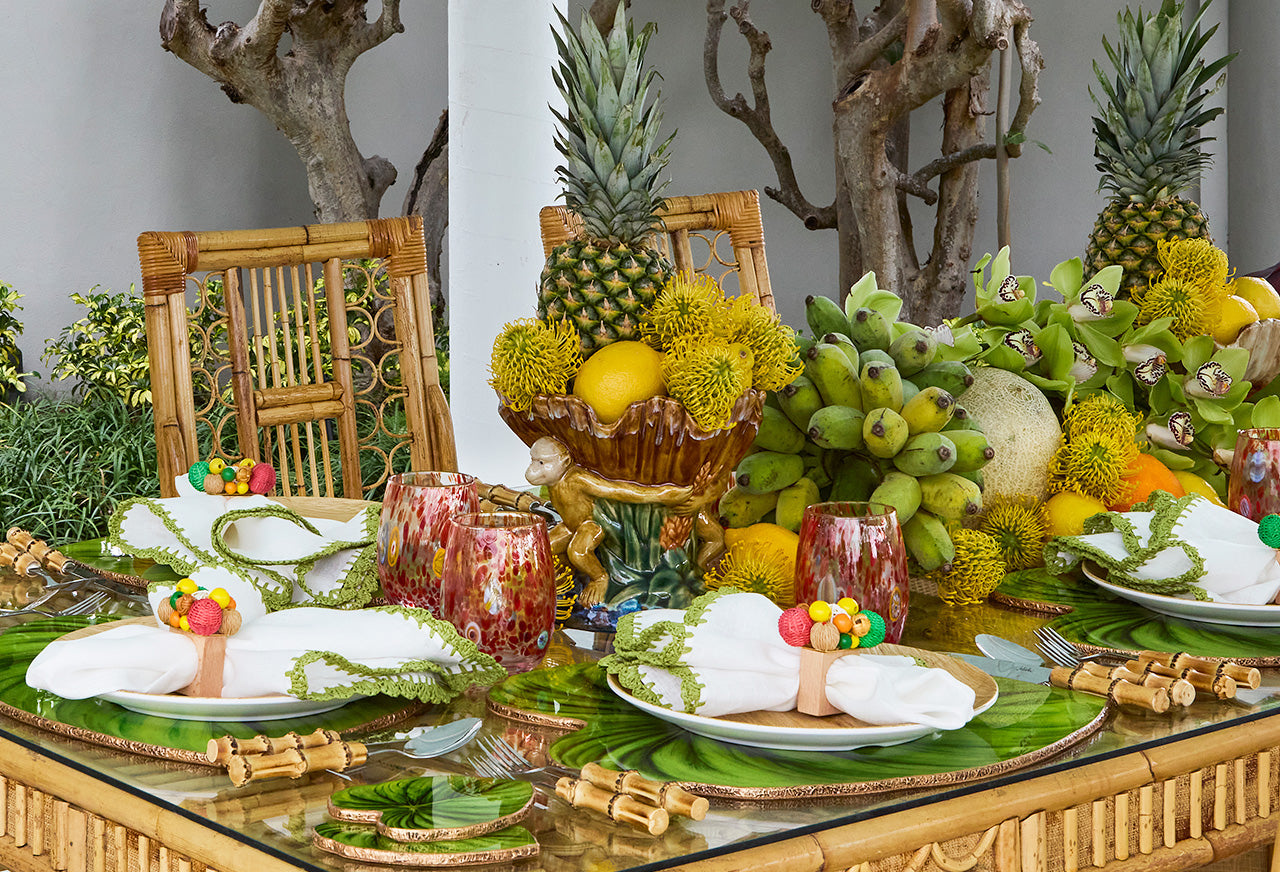Crystal Vases vs. Modern Designs: What's Best for Your Home?

While searching for the perfect crystal vase, you're usually looking for one thing: elegance. Crystal vases are an established staple of formal interiors. But today's top designers like Kim Seybert are full of ideas for more artistic takes on crystal cut glass vases.
In 2025, modern designs offer a world of exquisite alternatives to cut crystal vases. Think hand-blown glass, sculptural artistic statements, and brilliantly colorful luxury vase options.
With insights from the tableware expert Kim Seybert, this guide helps you choose the best glass vase for your style of table decor.
The Crystal Vase and Its Legacy

Before exploring modern alternatives, it’s worth understanding what sets a crystal flower vase apart. Known for its clarity and weight, crystal has long been a symbol of luxury. Its brilliance comes from precisely cut facets that reflect light with sharp intensity.
Heritage makers like Waterford and Baccarat often use lead crystal, which contains lead oxide to enhance sparkle and density. This allows for deep cuts and a radiant finish, but also makes the glass more fragile and unsuitable for food or drink.
Many modern manufacturers use lead-free crystal, which replace lead with minerals like barium or zinc. This change preserves clarity while improving durability. These crystalline vases blend aesthetic appeal with practicality as another option for contemporary homes.
Though vintage crystal still holds timeless appeal, its formality can feel out of place in relaxed interiors. That’s why more designers are embracing crystal vase alternatives. Think lighter, more expressive, and easier to style across modern settings.
Hand-Blown Glass Vases: The Contemporary Crystal Alternative

Among the most captivating alternatives to crystal are hand-blown glass vases. This fluid, artisanal design brings individuality, craftsmanship, and glowing elegance that feels at home in a modern space.
The Artisanal Craft of Hand-Blown Glass
Hand-blown glass begins with molten material shaped by both air and hand. Artisans guide its formation with precise breath control to create organic variation. The result is always slightly in flux, and that's the beauty of it.
Each vase carries signs of its authentic creation: delicate bubbles, shifting hues, and gentle asymmetry. A nuanced update to old crystal vase techniques, these details turn every hand-blown glass vase into a work of art.
Understanding Hand-Blown .vs. Mouth-Blown Glass
While often used interchangeably, these terms reflect slight variations in technique:
- Mouth-blown glass is formed solely by blowing into a pipe. This technique signature to all of Kim Seybert's designs.
- Hand-blown glass may start the same way, but includes shaping tools for greater refinement.
Both result in one-of-a-kind pieces that feel alive, which is something machine-cut crystal can’t replicate.
Crystal Brands vs. Modern Makers: Visual and Aesthetic Qualities

For generations, brands like Waterford, Baccarat, and Lalique shaped the idea of crystal as sharp-cut, brilliant, and formal. These crystal vases command attention in interiors. Each design is a structured, almost architectural silhouette.
Modern makers like Kim Seybert offer fresh, innovative brilliance rooted in movement, texture, and tonal depth. This way, you can achieve both a polished and more personal aesthetic.
While crystal brings sharpness and intensity, mouth-blown glass diffuses light like watercolor drifting in translucent layers. The artistic edges appear shaped by air rather than carved by tools. These modern designs bring a more subtle, nuanced, yet alive feeling to your space.
Kim Seybert's luxury glass vases add atmosphere rather than formality for a timeless, quieter luxury. Style it as a standalone statement or clustered centerpiece. These vases reflect the modern home's possibilities for creativity and personal expression.
Price Comparison: Buying Crystal Glass Vases .vs. Mouth-Blown Glass

You might ask how much is a lead crystal vase worth compared to mouth-blown glassware?
Heritage crystal vase brands like Waterford typically ask for around $250 to $400. Large-cut crystal vases or more intricately cut designs can reach $1,000 or more. For premium cut crystal bud vases, you will pay $175 or more.
These prices account for the legacy craftsmanship, material, weight, and brand prestige. While asking how much a crystal vase is worth, remember lead-free, options are available at lower, accessible prices.
In contrast, hand-blown glass vases often range from $100 to $300, depending on size, complexity, and artistry. Larger or one-of-a-kind pieces may fall into a similar range as crystal but offer greater individuality. Kim Seybert's luxury vases feature choices between $65 and $75 for affordable luxury.
Contemporary Vase Materials Beyond Crystal

Contemporary materials expand the possibilities for form, color, and texture. Whether curating a tabletop or styling a shelf, today's decorative vases offer fresh takes on timeless elegance.
Colored Glass Vases
Color introduces emotion. From soft pinks and moody grays to ocean blues and greens, colored glass transforms how light moves through space. Kim Seybert's colored vases and glass candle holders combine layered tones with luminous finishes for dynamic visual moments.
Ceramic and Porcelain Options
Ceramic vases bring earthy weight and texture. Matte, crackled, or glazed, they're perfect for minimalist interiors and natural palettes. With a soft sheen and fluid look, porcelain feels refined yet relaxed. These styles pair beautifully with designer table linens and trending dinnerware in 2025.
Mixed Material Designs
Vases that mix glass with metal, wood, or stone create a modern contrast. These decorative vases double as design statements in eclectic homes or curated collections.
Styling Ideas Using Contemporary Vases in Modern Homes

Vases don’t need flowers to make an impact. They anchor space, guide the eye, and add dimension to any room.
Creating Impactful Displays
- Start with groupings of three, five, or seven vases. Vary height, form, and finish for balance and visual rhythm.
- Pair a mouth-blown vase with a small crystal bud vase and a vintage cut-glass piece for a layered texture.
- Ground the display with a tray, stack of books, or soft textile. Echo nearby tones for cohesion. These small details make styling feel effortless and intuitive.
Floral Arrangements for Different Vase Types
From a cut glass flower vase to a colored vase, each style invites a different mood:
- Tall vases suit branches and long-stemmed florals like delphinium or calla lilies
- Rounded shapes beautifully showcase peonies or ranunculus
- Artistic bud vases shine with one simply striking flower
- For seasonal decor, refresh arrangements with foliage, dried elements, or luxury vase fillers.
Consider enhancing crystal flower vases with luxury cloth napkins, high-end placemats, and more elegant settings. For more inspiration, check out these flower vase styling tips.
Vase Placement Throughout the Home
In addition to dining tables, vases work throughout the entire home, such as:
- Entry tables: Use varied heights for drama
- Bookshelves: Break horizontal lines with low, wide vessels
- Nightstands & bathrooms: Add softness with small-scale pieces
- Consider rotating vases with the changing seasons. Similar to changing up textiles and greenery, this method will keep spaces feeling refreshed and intentional.
Looking for more styling tips? Discover interior designer secrets to using vases in home decor.
Glass Vases: Cleaning, Maintenance, and Storage

Proper care protects beauty and extends longevity. Here are the main guidelines:
- Hand-wash vases with warm, soapy water using a soft cloth. Avoid sudden temperature changes, such as pouring hot water into a cold vase, which can cause cracking.
- Do not use a dishwasher to clean crystal vases. The heat and detergents can dull the surface and cause damage.
- Avoid harsh abrasive cleaners or scouring pads, especially on glazed ceramic or colored glass.
- Dry vases with a soft, lint-free cloth to get a polished finish.
- Keep crystal vases upright to avoid extra pressure on the rims and possible chipping.
- Place felt, soft padding, or linen as a layer if stacking is necessary.
- Avoid direct sunlight and extreme temperatures. In particular, for hand-blown and colored glass, these precautions preserve the structure and color.
For more details, Kim Seybert's Product Care Guide contains more expert tips.
Selecting the Perfect Alternative to Crystal for Your Home

Whether you choose tall crystal vases or small bud vases, this designer secret anchors spaces with shape, tone, and texture. To select the right piece, consider:
- Where will it live? Look at proportion, sightlines, and lighting to make the perfect match.
- What will it hold? Minimal stems need the narrow neck. Fuller arrangements the need balance of tall flower glass vases.
- Is it a focal point or part of a group? Varying height and shape builds impact.
When choosing hand-blown glass, look for clarity, subtle variation, and a weighted base. Each of these qualities proves to be a hallmark of artisan craftsmanship.
Kim Seybert's luxury vase collection also features Czech glass, which is known for its brilliance and centuries-old techniques. This beautiful balance of tradition with modern design provides versatile styling options for the home.
The Evolving Role of Decorative Vases

Once reserved for special occasions, decorative vases now offer a quieter kind of luxury throughout the year.
As interiors shift from ornate to organic, vase design evolves. Where crystal once glittered, mouth-blown artistry now brings fresh style to the table.
Kim Seybert’s collaboration with Baccarat reimagined traditional crystal through a modern lens. Kim Seybert brings this pioneering vision to every table decor collection, uniting craftsmanship and refined materials.
For more inspiration, explore Kim Seybert's curated tablescapes and luxurious vases for unique ways to express your signature style.

